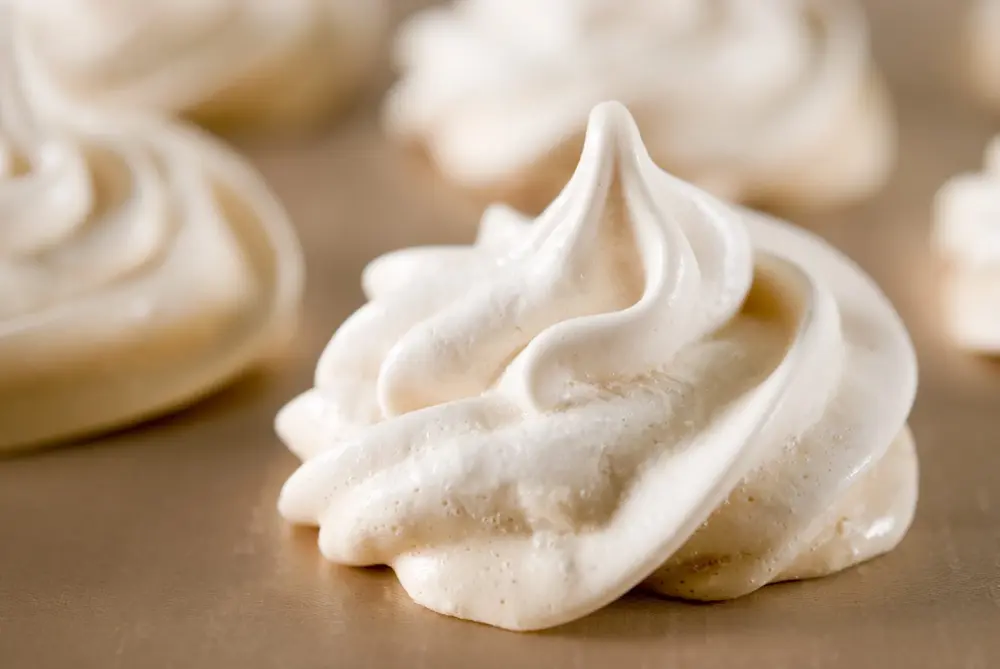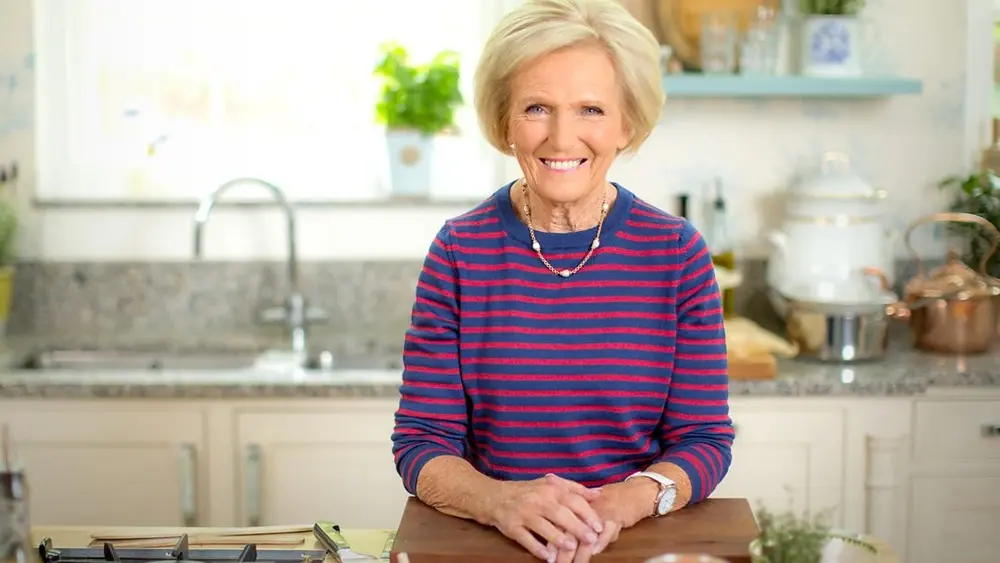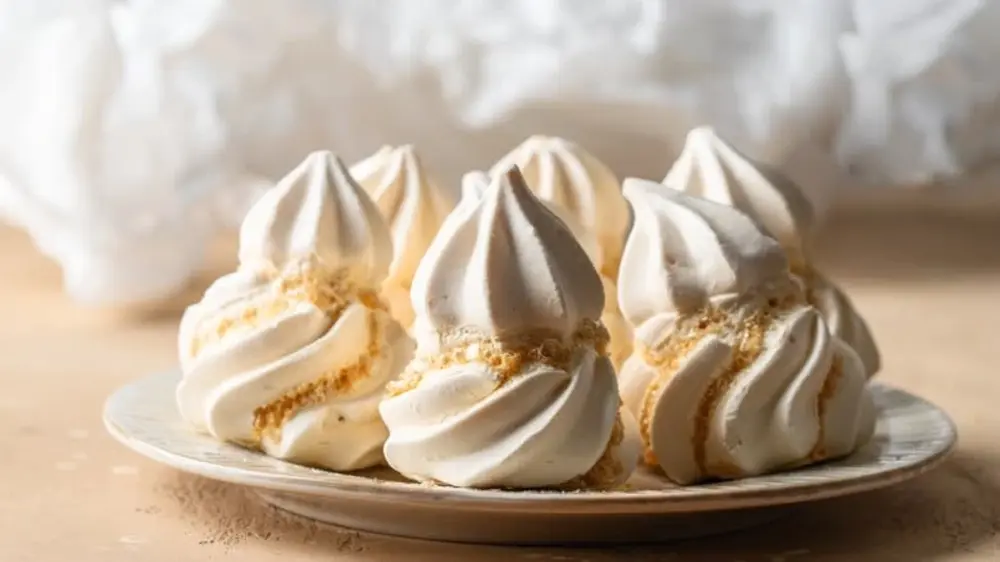Mary Berry Meringue Recipe: Easy, Light & Perfect

If you’ve watched Mary Berry on The Great British Bake Off, you know she champions classic British desserts made with precision. Her meringue recipe is iconic—perfectly crisp on the outside and delicately soft in the center. This guide takes inspiration from her foolproof method while offering step-by-step help, expert tips, and creative twists to make the perfect Mary Berry-style meringue every time.
In this blog, we lead you to a gradual, infallible guide to making smooth meringues, accompanied by a twist: we go beyond the fundamental directions by breaking down the science, contributing artistic alternatives, and answering ultimate common meringue-making mistakes. Among her most popular bakes, the Malteser tray bake stands out for its simplicity and indulgent flavor.
What Makes a Great Meringue?
Mary Berry is known for her simple, elegant approach to baking. Her meringues focus on balance—crisp shells with soft, marshmallow-like centers. What makes her technique special is its reliability. With just a few key steps and the right ingredients, anyone can make consistent, bakery-quality meringues at home.
Unlike other directions that demand distinctive tools or excessively difficult steps, her adaptation is approachable. But what doubtlessly sets her apart is consistency—her meringues forever turn out exactly when you understand her law.
What we’re doing in this place is construction on her solid base while adjoining new visions, techniques, and upgrades to suit all sorts of chefs. Another recipe that reflects this same balance of elegance and ease is her vanilla buttercream, which pairs beautifully with almost any sponge or cupcake.
Ingredients Mary Berry Meringue Recipe
Understanding your ingredients is the beginning of meringue expertise.
Basic Ingredients:
- 4 large egg whites, at room temperature
- 225g caster sugar (superfine sugar for best results)
- 1 teaspoon cornflour (optional, for a soft center)
- 1 teaspoon white wine vinegar or cream of tartar (optional, for stability)
- Pinch of salt
- 1/2 teaspoon vanilla extract or almond extract (optional, for subtle flavor)
- A few drops of food coloring (optional, for decorative meringues)
- Optional mix-ins: flaked almonds, ground hazelnuts, shredded coconut, or citrus zest for extra texture and flavor
Optional Additions:
- Vanilla extract or almond extract – For flavor insight.
- Food coloration – A whirl of delicate color can make them optically marvelous.
Tip: Always crack your eggs one at a time into a different bowl before adding them to your joining bowl. Even a shred of yolk can ruin your covering.
Step-by-Step Instructions for Meringue Recipe Mary Berry

Step 1: Prep Your Tools
Make sure your stirring bowl and whip are squeaky clean and dry. Any grease or water will obstruct the egg whites’ ability to form hard peaks.
Step 2: Beat the Egg Whites
Using an electric mixer, beat the egg whites on medium speed until they form soft peaks—when the mixture just starts to hold its shape but still droops slightly. This usually takes 3–4 minutes.
Step 3: Add Sugar Gradually
While the mixer is running, gradually add the caster sugar one spoonful at a time. This allows the sugar to fully dissolve and helps create a glossy, stable meringue.
Step 4: Whip Until Stiff Peaks
Continue whisking until you reach stiff peaks—the meringue should look glossy and form sharp peaks that stand straight when you lift the whisk.
Step 5: Pipe or Spoon upon a Tray
Line a cookie sheet with parchment paper. Use a piping bag or a nozzle to shape your meringues.
Step 6: Bake Low and Slow
Bake in a preheated microwave oven at 110°C (225°F) for 1.5 hours, then shut off the microwave and leave the meringues inside to cool for another 30 minutes.

The Science Behind Perfect Meringue
To make meringues like Mary Berry, understanding the science helps. Beating egg whites unfolds their proteins, trapping air and creating foam. Sugar strengthens this foam and adds stability. A low baking temperature dries the meringue slowly, giving it that iconic crisp shell and soft interior.
- Egg whites are generally water and protein. When defeated, proteins unravel and trap air, forming a constant foam.
- Sugar reinforces this construction and increases shine. If added too fast, it won’t discontinue and will bring about a grainy covering.
- Low boiling temperature allows the covering to dry and alternatively cook, bestowing it with the sign of a fresh covering and soft center.
Fun case: Egg whites whip best when they’re 21–23°C (70–74°F). Yes, sizzling is that exact!
Common Mistakes and How to Fix Them
Even competent bakers can encounter meringue mistakes. Here’s what to anticipate:
Problem | Cause | Fix |
Weeping | Underbaking or excessive sugar | Ensure filled baking opportunity and dry covering moderately in a microwave oven |
Gritty balance | Sugar is not completely dissolved | Add sugar moderately and beat just before shiny |
Flat meringue | Greasy finishes or inner core adulteration | Clean forms completely, and separate eggs cautiously |
Sticky meringue | Humid surroundings | Bake on dry days or use a dehumidifier in the kitchen. |
The same attention to method and ingredient quality can be seen in her cheese scones, which combine sharp cheddar and a light texture for a perfect savory bake.
Creative Twists on the Classic Meringue
Coconut Crunch Meringues
Fold in the divested coconut before sizzling for a nutty crunch that pairs well with the accompanying fruit.
Lemon Curd Meringue Sandwiches
Use two small meringues and sandwich them with the accompanying sharp, sour. Elegant and obsessive.
Mocha Swirl Meringues
Add a teaspoon of cappuccino powder and boil softened dark chocolate into the meringue before scorching.
Pavlova Base
Pipe into an abundant round and stew to use as the base for pavlova. Top with accompanying hit cream and seasonal fruit.
Pro Tip: You can even crush leftover covering and scatter it over yogurt, frozen dessert, or a coagulated dish for a sweet, brittle covering.
Storage, Serving & Make-Ahead Tips
- Storage: Keep scorched meringues in a sealed box at room temperature. They’ll last for a week if retained dry.
- Freezing: Meringues don’t chill well after being previously baked, but you can refrigerate the immature meringue combination for later use.
- Make-Ahead: You can simmer meringues a day or two earlier for bodies or gatherings.
- Serving Idea: Serve covering nests, suffused with accompanying whipped cream and light for a Mary Berry-certified cake.
Final Thoughts
Mary Berry’s leisurely meringue formula is, in addition to just a sweet treat, a rite of passage for home bakers. With a smattering of additives, to some extent patience, and the tips from this guide, you’ll be well on your way to generating spotless meringues at any opportunity.
FAQs
Why won’t my meringue strengthen?
Because the bowl or beaters may have grease, or there’s yolk in the whites.
Can I use granulated sugar instead of caster sugar?
Yes, but it takes longer and may bring about gritty meringue.
How do I identify my meringue is ready?
It endures being glossy and forming hard peaks that hold their shape.
How do I make it whiter?
Mix longer, and add a tiny amount of violet gel color.
Can I pipe this buttercream?
Yes, it holds the shape of a swirl and borders very well.
